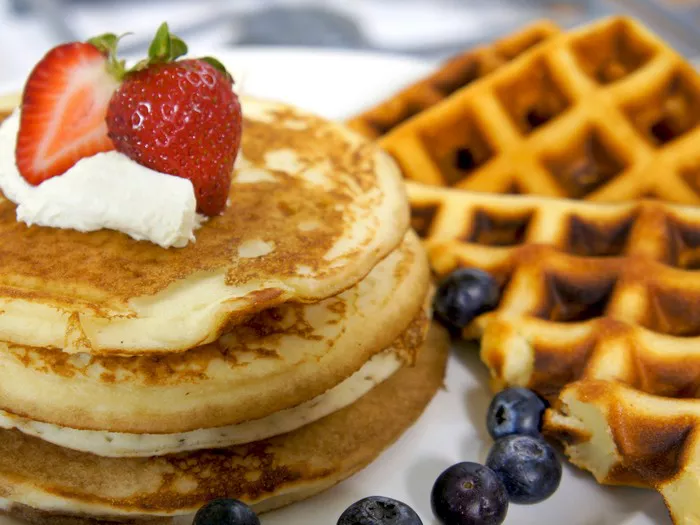Indulging in the sweet aroma of freshly baked waffles, topped with an array of delectable treats, is an experience cherished by many. For those with a passion for culinary delights and a dream of entrepreneurship, opening a waffle house can seem like the perfect venture. However, behind the syrupy sweetness lies a complex web of expenses and considerations. In this comprehensive guide, we delve into the true cost of opening a waffle house, from initial investments to ongoing operational expenses.
Market Research and Location Selection
Before diving into the financial aspects, aspiring waffle house owners must conduct thorough market research and carefully select an optimal location. Understanding the target demographic, assessing local competition, and evaluating foot traffic are crucial steps in this process. Market research expenses may include hiring professionals, conducting surveys, and analyzing data, with costs varying depending on the extent of research required.
Once market research is complete, finding the perfect location becomes paramount. Factors such as accessibility, visibility, and proximity to potential customers heavily influence the success of a waffle house. Lease or purchase costs for commercial real estate vary significantly based on location, size, and amenities. Additionally, renovation and customization expenses to adapt the space to the needs of a waffle house must be factored in.
Legal and Regulatory Requirements
Navigating the maze of legal and regulatory requirements is a fundamental aspect of opening any business, and a waffle house is no exception. Entrepreneurs must obtain various permits, licenses, and certifications to operate legally. These may include health permits, food handler certifications, zoning permits, and business licenses.
Legal consultation fees, application costs, and compliance expenses add up quickly and should be budgeted for accordingly. Additionally, entrepreneurs must consider ongoing costs associated with maintaining compliance with evolving regulations, such as health inspections and permit renewals.
Equipment and Supplies
Equipping a waffle house with the necessary tools and supplies is a significant expense. Essential equipment typically includes commercial-grade waffle makers, refrigeration units, cooking utensils, and display cases. The cost of kitchen equipment varies based on brand, quality, and capacity.
In addition to equipment, entrepreneurs must purchase initial inventory and supplies, including ingredients, packaging materials, cleaning supplies, and signage. Bulk purchasing discounts and negotiation skills can help mitigate these expenses to some extent.
Staffing and Training
A well-trained and efficient staff is essential for delivering exceptional customer experiences and maintaining operational excellence. Staffing requirements vary based on the size and scope of the waffle house but commonly include roles such as cooks, servers, cashiers, and cleaners.
Recruitment expenses, including advertising, background checks, and hiring bonuses, should be considered. Furthermore, ongoing expenses such as wages, payroll taxes, and employee benefits contribute significantly to the overall cost of running a waffle house.
Comprehensive training programs are necessary to ensure that staff members are proficient in waffle preparation, food safety protocols, customer service standards, and operational procedures. Investing in staff training not only enhances the quality of service but also reduces the risk of costly errors and inefficiencies.
Marketing and Branding
Building brand awareness and attracting customers are critical challenges for new waffle houses. Effective marketing strategies may include online advertising, social media campaigns, local promotions, and community outreach initiatives. Entrepreneurs must allocate resources for marketing expenses such as graphic design, printing, digital advertising platforms, and promotional events.
Developing a cohesive brand identity, including logos, signage, and packaging, also requires financial investment. Collaborating with professional designers and marketing agencies can help create a distinctive brand that resonates with the target audience.
Insurance and Contingency Funds
Protecting the waffle house against unforeseen risks and liabilities is essential for long-term sustainability. Insurance coverage may include property insurance, liability insurance, workers’ compensation insurance, and business interruption insurance. Premiums vary based on coverage limits, deductible amounts, and the location of the waffle house.
Establishing a contingency fund to cover unexpected expenses, such as equipment repairs, inventory losses, or legal disputes, is prudent. Financial experts recommend setting aside a percentage of revenue each month to build a robust financial cushion and mitigate the impact of unforeseen challenges.
Grand Total: Calculating the Cost
Summing up the various expenses involved in opening a waffle house provides a clearer picture of the total investment required. While the specific costs vary depending on factors such as location, size, and business model, a rough estimate can be formulated:
Market Research and Location Selection: $5,000 – $20,000
Legal and Regulatory Requirements: $3,000 – $10,000
Equipment and Supplies: $20,000 – $50,000
Staffing and Training: $10,000 – $30,000 (initial)
Marketing and Branding: $5,000 – $15,000
Insurance and Contingency Funds: $5,000 – $20,000
Total Initial Investment: $48,000 – $145,000
It’s important to note that these estimates serve as a guideline and that actual expenses may vary. Additionally, ongoing operational costs, such as rent, utilities, payroll, inventory, and marketing, must be factored into the financial planning process.
Conclusion
Opening a waffle house can be a rewarding entrepreneurial endeavor, offering the opportunity to delight customers with delicious creations and build a thriving business. However, it requires careful planning, diligent research, and a significant financial investment.
By thoroughly assessing the costs involved, from market research and location selection to equipment purchases and staffing, aspiring waffle house owners can develop a realistic budget and financial plan. With strategic decision-making, dedication, and a passion for waffles, entrepreneurs can embark on the exciting journey of bringing their dream of owning a waffle house to life.

